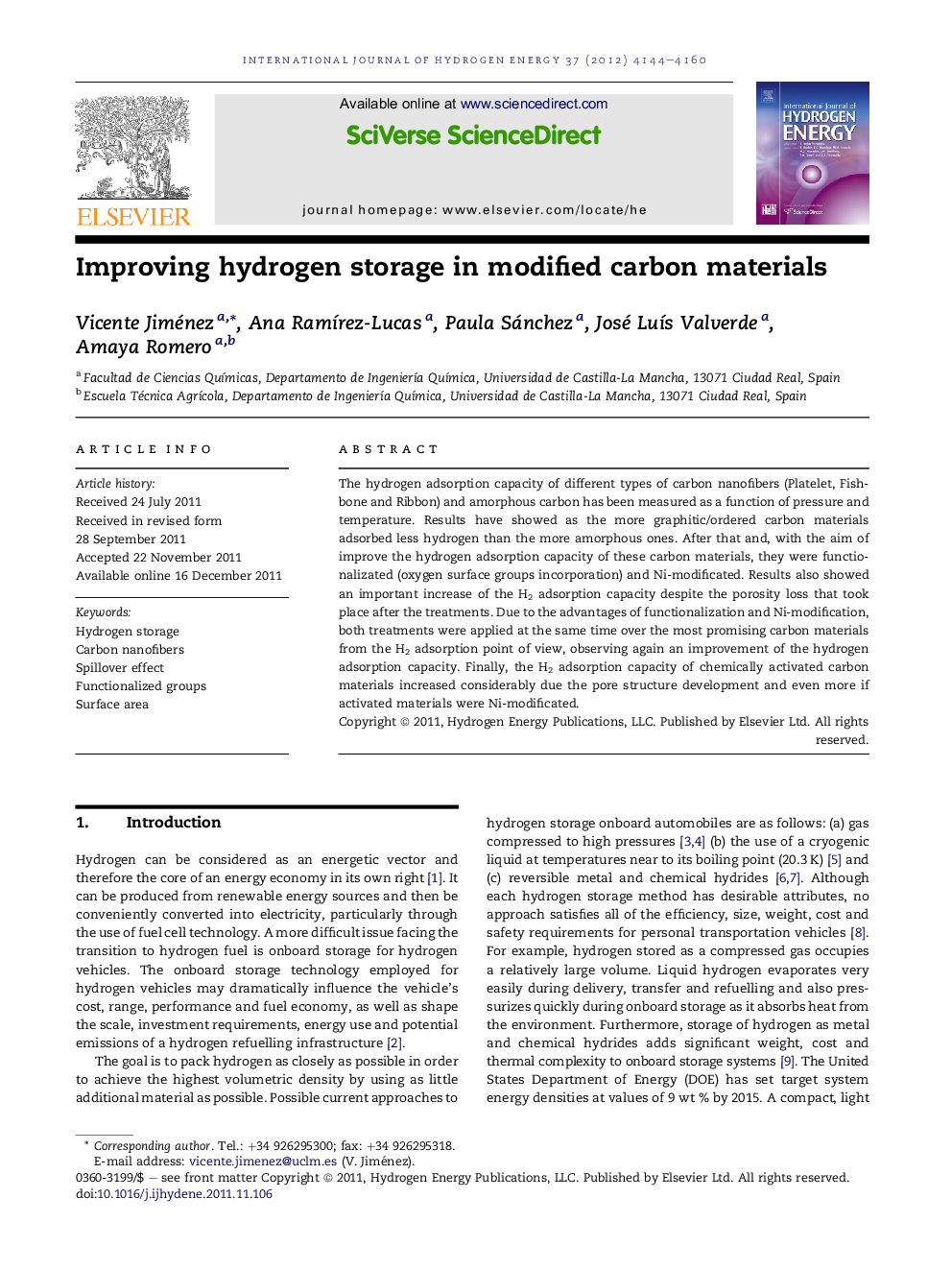| Article ID | Journal | Published Year | Pages | File Type |
|---|---|---|---|---|
| 1275468 | International Journal of Hydrogen Energy | 2012 | 17 Pages |
The hydrogen adsorption capacity of different types of carbon nanofibers (Platelet, Fishbone and Ribbon) and amorphous carbon has been measured as a function of pressure and temperature. Results have showed as the more graphitic/ordered carbon materials adsorbed less hydrogen than the more amorphous ones. After that and, with the aim of improve the hydrogen adsorption capacity of these carbon materials, they were functionalizated (oxygen surface groups incorporation) and Ni-modificated. Results also showed an important increase of the H2 adsorption capacity despite the porosity loss that took place after the treatments. Due to the advantages of functionalization and Ni-modification, both treatments were applied at the same time over the most promising carbon materials from the H2 adsorption point of view, observing again an improvement of the hydrogen adsorption capacity. Finally, the H2 adsorption capacity of chemically activated carbon materials increased considerably due the pore structure development and even more if activated materials were Ni-modificated.
► It was obtained a carbon material with hydrogen adsorption capacity of 4.5% wt. ► It was study the hydrogen adsorption in different carbon materials. ► The different modification of carbon materials increased the hydrogen adsorption. ► The oxygenated groups increased the hydrogen adsorption.
